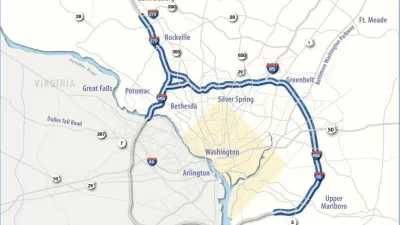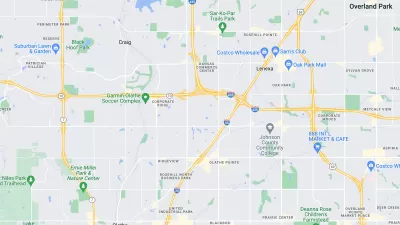An examination of the proposed plan for the West Bay Parkway in Florida reveals many holes, a wasteful project, and the need for more accountability in transportation planning.
Kevin DeGood provides an installment in the "White Elephant Watch" series, which highlights unnecessary transportation infrastructure projects—in this case, the West Bay Parkway in Bay County, Florida. "The project has an estimated cost of $566 million," writes DeGood. Yet, "[g]iven its location, the proposed parkway will not serve as an effective alternative route for travelers on U.S. Route 98. Moreover, alternative investments in things such as public transportation would provide far greater congestion relief at a much lower cost."
The article breaks down each of these points. For instance, DeGood debunks the claim by the Florida Department of Transportation (FDOT) that "the West Bay Parkway will reduce congestion along U.S. 98 by siphoning off substantial traffic in the future" by citing the target roadway level of service (LOS):
"As mentioned, approximately half of the proposed parkway would consist of widening CR 388 from a two-lane highway to a four-lane divided highway. If this corridor were actually an attractive or realistic alternative to U.S. 98 for area drivers, then traffic modeling would show serious congestion problems along CR 388 in future years without the widening. However, when FDOT projected out to 2035, it found that “CR 388 was not among the roads listed as failing to meet the LOS standard,” meaning that even with travel demand assumptions—pegged at 4.78 percent annually—that outstrip population growth, CR 388 still performed perfectly well without the parkway expansion. In short, CR 388 is not an effective alternative to U.S. 98 for what little through traffic the area generates—nor does it produce much local traffic."
Other exceptions DeGood takes with the proposed plan include overly ambitious population growth targets and a lack of feasibility for the tolling option for financing the project.
All in all, according to the article, the project is a perfect example of the types of products yielded by a funding system—from federal down to the state level—that requires no accountability in transportation planning.
FULL STORY: White Elephant Watch: Vol. 2

Maui's Vacation Rental Debate Turns Ugly
Verbal attacks, misinformation campaigns and fistfights plague a high-stakes debate to convert thousands of vacation rentals into long-term housing.

Planetizen Federal Action Tracker
A weekly monitor of how Trump’s orders and actions are impacting planners and planning in America.

San Francisco Suspends Traffic Calming Amidst Record Deaths
Citing “a challenging fiscal landscape,” the city will cease the program on the heels of 42 traffic deaths, including 24 pedestrians.

Defunct Pittsburgh Power Plant to Become Residential Tower
A decommissioned steam heat plant will be redeveloped into almost 100 affordable housing units.

Trump Prompts Restructuring of Transportation Research Board in “Unprecedented Overreach”
The TRB has eliminated more than half of its committees including those focused on climate, equity, and cities.

Amtrak Rolls Out New Orleans to Alabama “Mardi Gras” Train
The new service will operate morning and evening departures between Mobile and New Orleans.
Urban Design for Planners 1: Software Tools
This six-course series explores essential urban design concepts using open source software and equips planners with the tools they need to participate fully in the urban design process.
Planning for Universal Design
Learn the tools for implementing Universal Design in planning regulations.
Heyer Gruel & Associates PA
JM Goldson LLC
Custer County Colorado
City of Camden Redevelopment Agency
City of Astoria
Transportation Research & Education Center (TREC) at Portland State University
Jefferson Parish Government
Camden Redevelopment Agency
City of Claremont




























